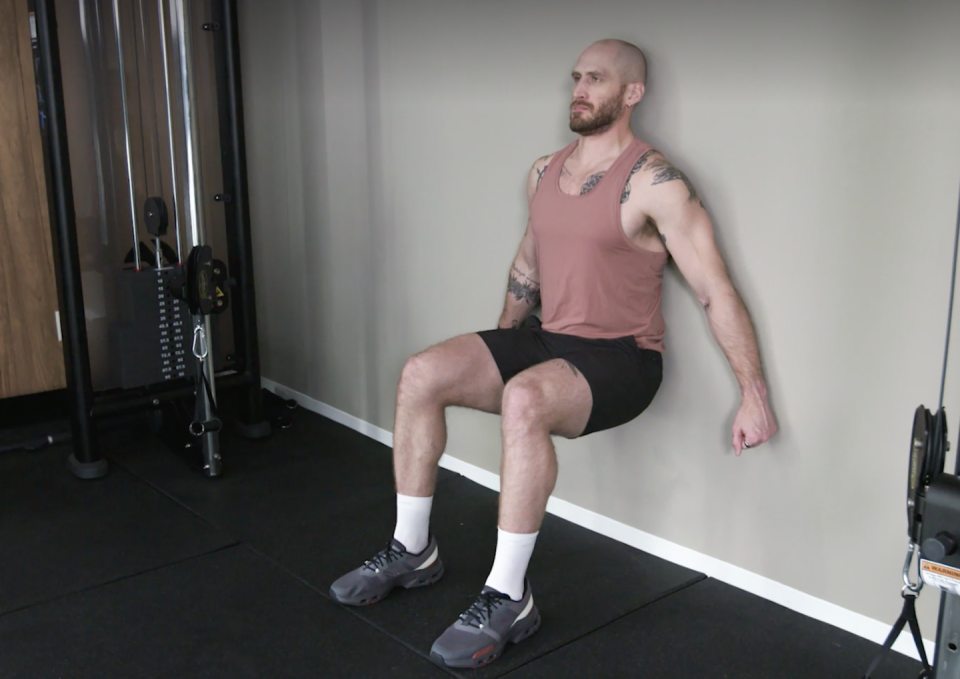This Basic Leg Day Move Can Help Beginners Build Strength
LOWER BODY TRAINING is one of the places where you'll be able to move the most weight in your strength and conditioning regimen. That's not always going to be your focus, however. When you find yourself in a position where you don't have access to equipment, you're looking for less strenuous workout, or you're just starting out and you need to build up to more challenging movements, there are exercises like the wall squat.
The wall squat (or, as some people refer to the movement, the wall sit) is about as simple an exercise as you can do. The form is right there in the name—you squat against the wall—but it is a bit more technical than you might think at first blush.
Here, MH fitness director Ebenezer Samuel, C.S.C.S. leads you through the nitty gritty, need-to-know details about the wall squat.
How to Do the Wall Squat
Start leaning against the wall with your feet just wider than hip-width apart. Your whole torso should touch the wall; make sure there's no arch in your back.
Walk your feet forward to sit down into the squat position, with your knees at about a 90 degree angle. Your thighs should be fully parallel to the ground, and your shins perpendicular to the ground.
Squeeze your shoulder blades, abs, and glutes to create tension. Drive your heels into the floor.
For a more advanced version of the movement, lower yourself down below the parallel thigh position.
Benefits of the Wall Squat
The wall squat is a great starter leg exercise for beginners. All you need to do it is a stable wall, and you can hold for time, rather than counting reps.
You'll also hone your knee flexion (bending your knees) through an isometric contraction. This will be easier on your body that movements that require you to contract and work through a wide range of motion. Samuel says this will help to hone your body awareness and positioning, too.

How to Add the Wall Squat to Your Workouts
If you're a beginner, you can use the wall squat as a primary exercise in your workout routine. Start by performing two to three sets for up to 45 to 60 seconds.
Samuel cautions that if you're able to hold your position for more than 60 seconds without any struggle, you have one of two problems: either you're not creating enough tension, or you're ready to move on to more difficult movements that require an external load for your workouts.
Wall Squat Mistakes to Avoid
You might have seen guys share videos on social media of their wall squat reps with stacks of plates piled up on their laps. Don't waste your time doing that. Instead, level up to a loaded lower body movement when you're ready for an extra challenge.
You should also be sure not to rest by leaning forward with your hands on your knees. The wall squat is all about isometric contraction and tension, and you'll cut through that as soon as you rest in that way.
You Might Also Like

